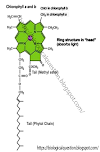LIFE CYCLE OF HIV
HIV (Human Immunodeficiency Virus) is a virus that attacks
the immune system, specifically CD4+ T cells, which are essential in fighting
infections.
7 Stages of HIV Life Cycle
The life cycle of HIV can be divided into seven stages:
1 . Attachment and Fusion: The virus attaches to specific
receptors on the surface of CD4+ T cells and other immune cells. The virus then
fuses with the cell membrane, allowing it to enter the cell.
2 . Reverse Transcription: Once inside the cell, HIV uses its own reverse transcriptase enzyme to convert its RNA into DNA. The viral DNA then enters the cell nucleus and integrates into the host cell's DNA.
3 . Transcription and Translation: The integrated viral DNA is transcribed into messenger RNA (mRNA) by the host cell's own machinery. The viral mRNA is then translated into viral proteins by the host cell's ribosomes.
4 . Assembly: The newly formed viral proteins are transported to the cell membrane and assemble into immature viral particles.
5 . Budding: The immature viral particles bud off from the host cell, taking some of the cell membrane with them.
6 . Maturation: As the viral particles bud off, they undergo a maturation process in which they are cleaved by a viral protease enzyme into their final, functional form.
7 . Infection: The mature viral particles are released from the infected cell and can infect other CD4+ T cells and continue the cycle. Over time, HIV infection can lead to a gradual weakening of the immune system, which can ultimately result in acquired immunodeficiency syndrome (AIDS).
HIV Life Cycle Steps
The life cycle of HIV involves several stages, which can be divided into 12 steps:
1 . Attachment: The virus attaches to specific receptors on the surface of CD4+ T cells and other immune cells.
2 . Co-receptor binding: HIV also binds to a co-receptor on the surface of the host cell, allowing the virus to enter.
3 . Fusion: The virus fuses with the cell membrane, allowing it to enter the host cell.
4 . Uncoating: The viral capsid is disassembled, and the viral RNA is released into the host cell.
5 . Reverse transcription: HIV uses its own reverse transcriptase enzyme to convert its RNA into DNA.
6 . Integration: The viral DNA integrates into the host cell's DNA.
7 . Transcription: The integrated viral DNA is transcribed into messenger RNA (mRNA) by the host cell's own machinery.
8 . RNA processing: The viral mRNA is processed to produce the necessary viral proteins.
9 . Translation: The viral proteins are produced by the host cell's ribosomes.
10 . Assembly: The viral proteins are transported to the cell membrane and assemble into immature viral particles.
11 . Budding: The immature viral particles bud off from the host cell, taking some of the cell membrane with them.
12 . Maturation: As the viral particles bud off, they undergo a maturation process in which they are cleaved by a viral protease enzyme into their final, functional form.
Once the mature viral particles are released from the
infected cell, they can infect other CD4+ T cells and continue the cycle. Over
time, HIV infection can lead to a gradual weakening of the immune system, which
can ultimately result in acquired immunodeficiency syndrome (AIDS).



.png)

.png)
0 Comments